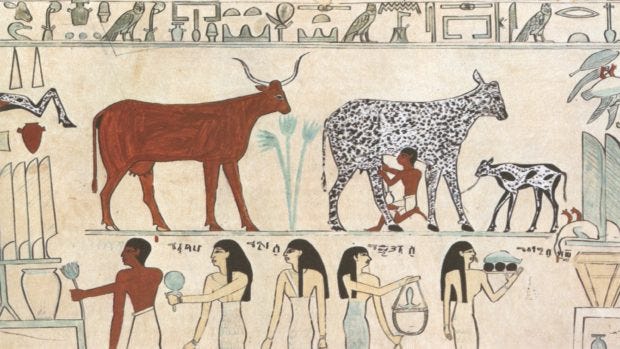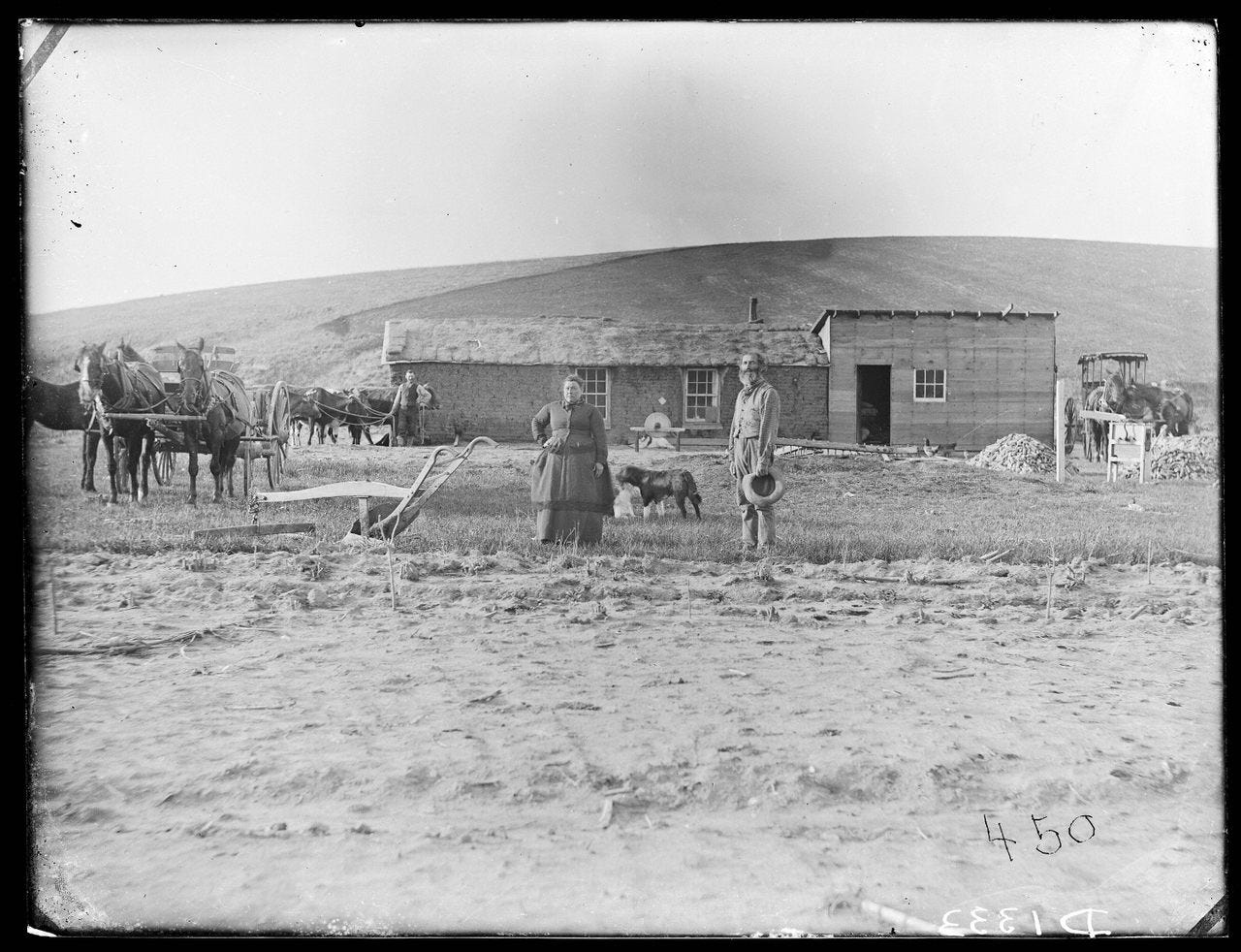Weekly Roundup- August 5th
Egyptian warfare, Colonial art, milk and lactose tolerance, and a mummy's head in an attic (!!)-- our favorites from the past week.
Works showing the complexities of life in the Americas under Spanish colonial rule go on show at LACMA
A new exhibition at the LACMA—that’s the stunning, encyclopedic LA County Museum of Art for those of you not from SoCal— looks at the arts of Latin America during colonial rule. It features over 90 works showing the hybridity and blending of cultures— African, Indigenous, Asian, and Spanish. One room focuses on casta (caste) paintings, which show inter-racial couples as exotica, ranked and categorized through skin color, clothing, and adornment. These paintings were made for a European audience, yet made locally in Latin America, to commodify these individuals for the European elites’ visual consumption, but also served to solidify existing racist ideals and maintain visions of White superiority.

Ancient Europeans were lactose intolerant. They drank milk anyway, study finds.
A new study out of Nature finds that humans loved milk (and cheese!!) so much they were willing to put up with a stomach ache for thousands of years prior to the natural selection of a lactose gene. The study looked at milk residues on thousands of pot sherds from over 500 different sites in Eurasia. It was assumed that milk drinking would be clearly linked to the moment in time when we developed a lactose tolerant gene, but indeed the opposite was found— humans have been drinking milk (and getting tummy aches) for thousands of years, with lactose persistence not being common until 1000 BCE. In other words, humans love cheese so much that they kept eating it until our bodies started to cooperate with our actions. It is now believed that the gene was only selected for when serious intestinal diseases made lactose indigestion life threatening.

Is the Silence of the Great Plains to Blame for ‘Prairie Madness’?
As White colonizers started moving westward in the United States there was an increase in rates of mental illness, termed prairie madness. (???!!!) Most people chalked this up to the isolation and rough living out on the prairie, but others researchers discuss the actual sounds, or lack thereof, driving people insane. In a new paper, Alex D. Velez, a paleoanthropologist with State University of New York at Oswego, argues that the silence from human noise accompanied by howling winds exacerbated mental illness—kind of like a sound deprivation chamber.
So one could imagine how a newly arrived settler, used to the sounds of a relatively more urban, small-town, or forested environment, might come to find every chicken cluck that breaks the prairie silence—every frog croak or drip of rainwater—to be as dreadfully distinct (and aggravating) as a clicking pen in a quiet library
Arguably there would have been many sounds on the prairie— crickets, rain storms, howling wolves, so it’s unclear how “silent” it truly was for these new colonizers of indigenous lands. Not to mention how impending death via disease, starvation, or attack does wonders for one’s mental health….

CT Scan Reveals Secrets of Egyptian Mummy's Head Found in Attic
[CW// human remains]
Attics can be very scary places. Kara remembers a series of novels from her adolescence about a family of siblings locked in an attic, and the brother and sister fell in love, and there were ghosts and trauma, but that’s a discussion for another day… Just imagine finding a mummified human head in your attic because that’s happened in Kent, England after the death of the home’s owner. The head was taken to Canterbury Museums & Galleries, where x-rays and a CT scan were conducted to find out more information about the head, which turns out to be ancient Egyptian. There are now plans to reconstruct the face of the individual.
The procurement or even gifting of ancient Egyptian human remains was unfortunately common practice in the 19th and 20th centuries, particularly as wealthy Europeans and Americans took body parts and even entire mummies home with them as souvenirs from their Grand Tour. It is assumed that this particular Egyptian’s head was bought during one such trip to Egypt. Not the final resting spot this mummy expected, to be sure…

Decision Making and Leadership in Egyptian Warfare
Spalinger’s take on Egyptian warfare is thought provoking… He argues that the Egyptian government lacked a “grand strategy,” as he termed it, with few advisors available to help the king in foreign matters (in comparison to Rome, for example). Perhaps that’s because the Egyptian government’s strategy was not hinged on building a vast empire, but on maintenance of wealth through limited colonization of the Levant and Nubia. Not everything has to be about growth, and Egyptian hegemony was not imperial in its organization. We must also remember that much of the evidence we have for battles and military strategy come from temple settings that obfuscate their interpretation through over-idealization.






